#the dagda
Text
Important Facts about Samhain from an Irish Celtic Reconstructionist
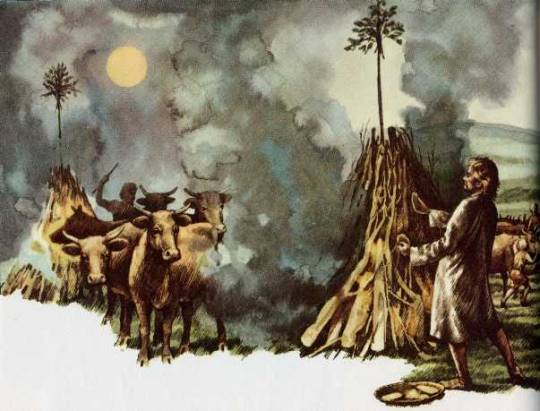
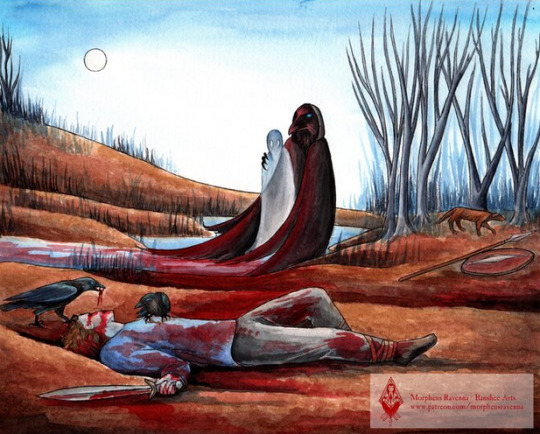

Pronunciation
SOW-in or SOW-een ~NOT~ Sam-han, Sam-win etc.
Dates
Most reconstructionists celebrate Samhain on Oct 31-Nov 1, however some may choose to celebrate on Gregorian Nov 13-14 as this would match the Julian dates of Oct 31-Nov 1. Some also believe that it was a three day festival spanning Oct 31- Nov 2 on which Nov 2 is specifically devoted to ancestral veneration, but there is no specific evidence of this, only possible extrapolation from more modern practices.
Following the Celtic method of days beginning at sunset, regardless of the specific dates you choose to celebrate on your festivities should begin at sunset and end at sunset.
Importance in the Mythos
Ná Morrighan has a strong connection to this time of year thanks to the story of Cath Dédenach Maige Tuired (The Last Battle of Mag Tuired) in which she is found depicted as the ‘Washing Woman’ (sometimes washing herself in the river and other times washing the bloodied armor of the soldiers that would die that day), on the eve of the battle which is also Samhain. The Dagda approaches her and couples with her (creating the ‘Bed of the Couples’ along the bank of river and granting Dagda her blessing in the battle to come). This encounter seems to over emphasize the liminality of the encounter by taking place during the changing of the year and with the couple each standing with ‘one foot on either bank’ of the river.
She and her sisters (Badb and Macha) then use various forms of magic to rain destruction on their enemies (in the form of fire and blood). After the day is won Morrighan speaks a prophecy that describes what is taken by some to be the end of days and others to be the events which will later lead to the Ulster Cycle.
Beneath the peaceful heavens lies the land.
It rests beneath the bowl of the bright sky.
The land lies, itself a dish, a cup of honeyed strength, there, for the taking, offering strength to each
There it lies, the splendour of the land.
The land is like a mead worth the brewing, worth the drinking.
It stores for us the gifts of summer even in winter.
It protects and armours us, a spear upon a shield
Here we can make for ourselves strong places, the fist holding the shield
Here we can build safe places, our spear-bristling enclosures.
This is where we will turn the earth. This is where we will stay.
And here will our children live to the third of three generations
Here there will be a forest point of field fences
The horn counting of many cows
And the encircling of many fields
There will be sheltering trees
So fodderful of beech mast that the trees themselves will be weary with the weight.
In this land will come abundance bringing:
Wealth for our children
Every boy a warrior,
Every watch dog, warrior-fierce
The wood of every tree, spear-worthy
The fire from every stone a molten spear-stream
Every stone a firm foundation
Every field full of cows
Every cow calf-fertile
Our land shall be rich with banks in birdsong
Grey deer before Spring
And fruitful Autumns
The plain shall be thronged from the hills to the shore.
Full and fertile.
And as time runs its sharp and shadowy journey, this shall be true.
This shall be the story of the land and its people
We shall have peace beneath the heavens.
Forever
(based on the translation by Isolde Carmody)
It is also mentioned in Echtra Cormaic that on this festival every seven years the high king would host a feast, it was at this time new laws could be enacted. (but it seems that individual Tuathas or possibly kings of the individual providence may have done this for their territories at Lughnasadh).
It seems to be a time considered especially susceptible to (or of) great change as it is the time which the Tuatha de Danann win victory over the Formorians and take control of Ireland, the invasion of Ulster takes place at this time in Táin bo Cúailnge, in Aislinge Óengusa Óengus and his bride-to-be are changed from bird to human and eventually he claims kingship of Brú na Bóinne at this time of year.
Celebration Traditions
Samhain is the beginning of the “dark half” of the year and is widely regarded as the Insular Celtic equivalent of the New Year. The “dark half” of the year was a time for story telling, in fact in this half of the year after dark is considered the only acceptable time to tell stories from the mythological and Ulster cycle (the Fenian cycle being assumed to be no older than the 12th century based on linguistic dating). Traditionally anything that had not been harvested or gathered by the time of this festival was to be left, as it now belonged to the Fae (in some areas specifically the Púca).
This was also an important time for warding off ill luck in the coming year. Large bonfires would be built and as the cattle were driven back into the community from the pastures they would be walked between these bonfires as a method of purification (the reverse custom of Bealtaine where the livestock were walked between the fires on their way out to the summer pastures). Assumed ritualistic slaughter of some of the herd would follow (though this perhaps had the more practical purpose of thinning the herd before the winter and creating enough food for the feasting). In some areas the ashes from these fires would be worn, thrown or spread as a further way to ward off evil.
Homes would be ritualistically protected from the Aos Sí (Fae or ‘Spirits’) through methods such as offerings of food (generally leaving some of the feasting outside for them), carving turnips with scary faces to warn them off (we now tend to do this with gourds), and smoke cleansing the home (in Scottish saining) traditionally with juniper, but perhaps rowan or birch might be an acceptable alternative. It is likely these would be part of the components used in Samhain bonfires as well, for the same reason.
Lastly based on later traditions as well as links in the mythology this is a time where divination practices or those with the ‘second sight’ were regarded to be especially potent.
Art Credit @morpheus-ravenna
#samhain#irish#irish mythology#irish polytheism#irish paganism#celtic reconstructionism#celtic paganism#celtic polytheism#na morrigna#the morrígan#the dagda#fire festival#blackcrowing#Irish reconstructionist
446 notes
·
View notes
Text

Grianstad shona daoibh!
In Ireland, the Winter Solstice is often associated with the Newgrange passage tomb in County Meath. Each year, as the sun rises on the Solstice, it aligns perfectly with tomb to illuminate the passage within.
Lots of historical, scientific and even crazy (I’m looking at you Ancient Aliens) theories exist as to why this occurs, but there is also some stories within our mythology associated with the event, including the Dagda’s affair with the Goddess Boann.
The Dagda was thought to be an Irish god of fertility and strength. A wife of one of his aides, Boann, a goddess of the River Boyne, was particularly entranced, and the couple soon began a clandestine affair. Affairs don’t stay secret when a god of fertility is involved, and Boann quickly fell pregnant around springtime.
Boann resided at Newgrange, and when her husband left for a hunting trip, the Dagda cast a spell to make the sun standstill for nine months and pause time. Boann carried her baby to term and eventually gave birth to Aengus, a god of youth and love. Despite it now being Winter, on Elcmar’s return he felt as if only a day had passed and the affair went unnoticed. That is until one day, when an adult Aengus would eventually arrive to duel Elcmar for Newgrange, which he deemed his birthright.
#irish mythology#artists on tumblr#irish folklore#newgrange#winter solstice#aengus#the Dagda#Boann#celtic polytheism#amylouioc art#my art#celtic mythology#fantasy illustration
235 notes
·
View notes
Text
90% of the time I'm like "the only reason why the medieval Irish material seems bizarre is because it isn't taught as part of the standard humanities curriculum -- Greek Mythology is just as bizarre, you're just USED to it, stop reducing this stuff to Lol That's So Weird", but then I do have to be like. "Anyway the postulated father god of the postulated pre-Christian Irish pantheon, if ever such a thing existed in a uniform way, creates a zombie apocalypse in one text that allows him to become king of Ireland and his wife is a crow (part time) that commits crimes and castrates a Viking warlord (who has a really messy family life btw). He also has a xylophone made out of corpses in another text." and I have to be like. "Okay, so maybe the Irish texts ARE a little bit. Out there. On occasion."
#for what it's worth though there's still a REASON for these things#the scribes weren't putting them in because Lol Funny#but also...yeah.#Zeus could never#irish mythology#the mythological cycle#the dagda#i should clarify: they weren't JUST putting them in because Lol Funny
171 notes
·
View notes
Photo


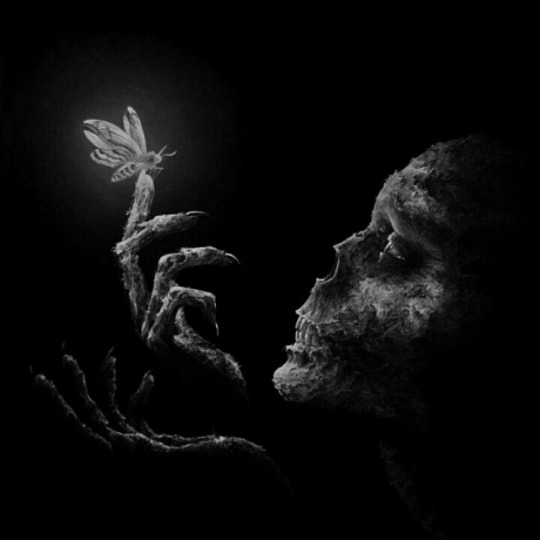


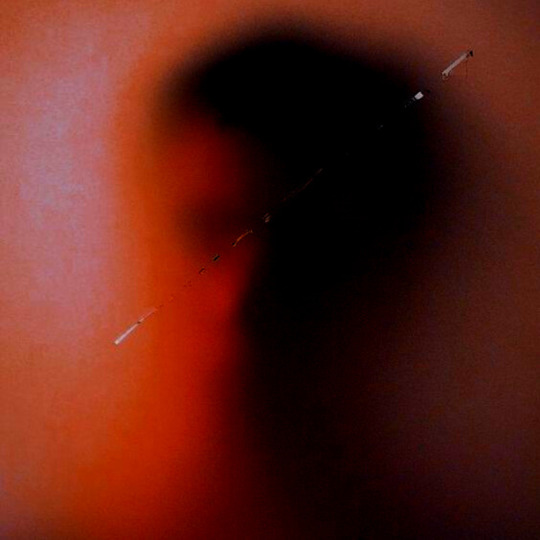

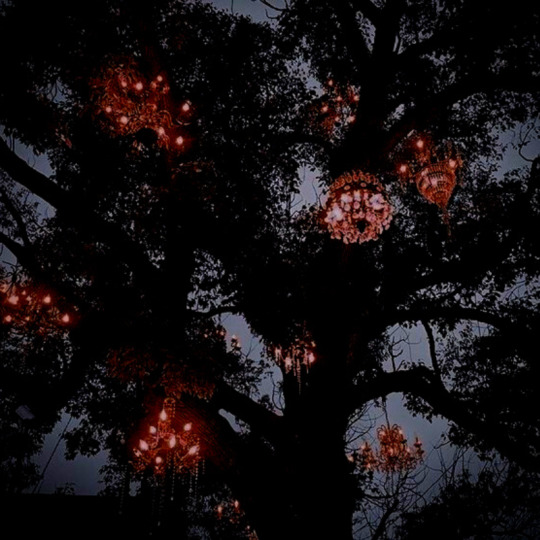

celtic mythology: the dagda
the dagda was chief of the tuatha dé danann, the foremost of the irish ancestral gods. highly skilled and wise beyond measure, he was not only the god of life and death, but of seasons, agriculture, fertility, magic, and druidry as well.
#celtic mythology#the dagda#celtic myth#mythedit#gods#*mine*#requested#tried to represent death and life
369 notes
·
View notes
Text

Irish mythology : The Dagda : Chief of the Tuatha Dé Danann, druid god, god of life and death, associated with seasons, agriculture, fertility, magic. He's depicted as very wise, skilled in arts and sciences of his time.
#moodboard#aesthetic#mythology#irish mythology#celtic mythology#irish gods#celtic gods#dagda#the dagda
53 notes
·
View notes
Text

GODSTONES - THE DAGDA
The Dagda ("the good/capable god") is portrayed in the lore as a powerful warrior, a wise chieftain, and a shaper of the land, appearing in such tales as the Second Battle of Moytura, the Wooing of Étaín, and How The Dagda Got His Magic Staff. Known for his massive stature, lowly appearance, and his mastery over all the arts, the Dagda is one of the most important figures in the Mythological Cycle.
This is an art series depicting the Gaelic gods as ancient statues, with designs loosely inspired by historical finds, such as the Boa Island and Tandragee idols from Northern Ireland, and the Ballachulish Figure from Scotland. In this piece, the Dagda is pictured with his signature harp, club, and cauldron.
#celtic#celticart#mythology#irish mythology#celtic mythology#folklore#the dagda#dagda#ollathair#cauldron#harp#club#deity#gaelpol#pagan#pagan art#godstones#forfedaproject
566 notes
·
View notes
Text

The Dagda
#the dagda#celtic#pagan#indo-european#heathen#paganism#mythology#aesthetic#ethereal#druid#ire#ireland#irish#scottish#scotland#painting#illustration
10 notes
·
View notes
Text

The Dagda, the first born and powerful chief of the Tuatha dé danann, he’s Married to the goddess the Morrigan. The Dagda is a god of many things, such as: fertility, strength, fatherhood, magic, weather, plant life, druidry, wisdom, life and death. To accentuate his many faceted qualities, his title of ‘the Dagda’ means ‘the good god’ attesting his excellence at all things. He may be the true identity of the god Briain, the first son of Donn and Danu. Briain, underestimating his own strength, killing his father in an attempt to free his other siblings from his parent’s embrace. The Dagda was also a major player in the wars against the Firbolg and the Fomorians. The Dagda’s role however wasn’t as great as his brother’s: Nuada. But when Nuada was injured in battle, the Dagda carried him back to safety.
Like most of the Irish Celtic gods, after christianization, the Dagda’s divinity was stripped away, with Christian writers depicting him as a mere sorcerer. But his popularity endured, those same Christian writers immortalized his myths in written form. The Dagda was also commonly conflated with the Norse Odin, as well as being connected to the Vedic god Varuna.
#art#character design#mythology#celtic#celtic mythology#irish#irish mythology#pagan#the dagda#dagda#briain#chief god#fertility god#wisdom god#life god#death god#plant god#tuatha de danann#strength god
19 notes
·
View notes
Text
dagda e offering
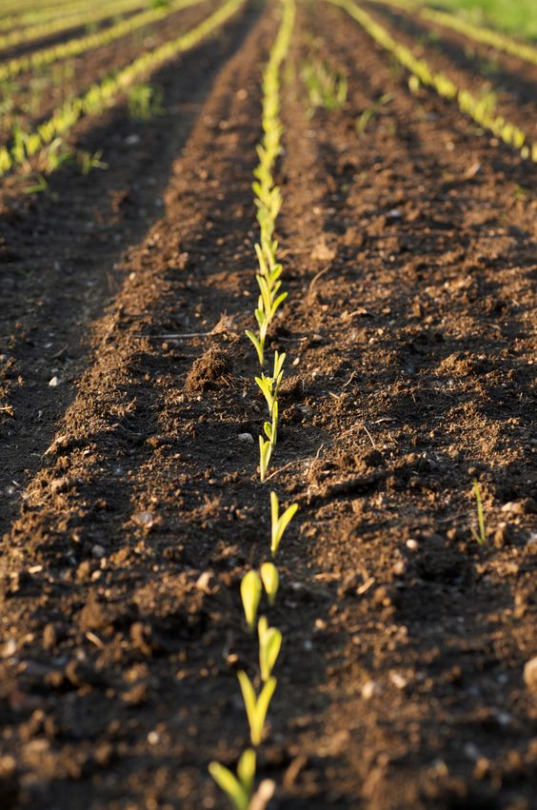
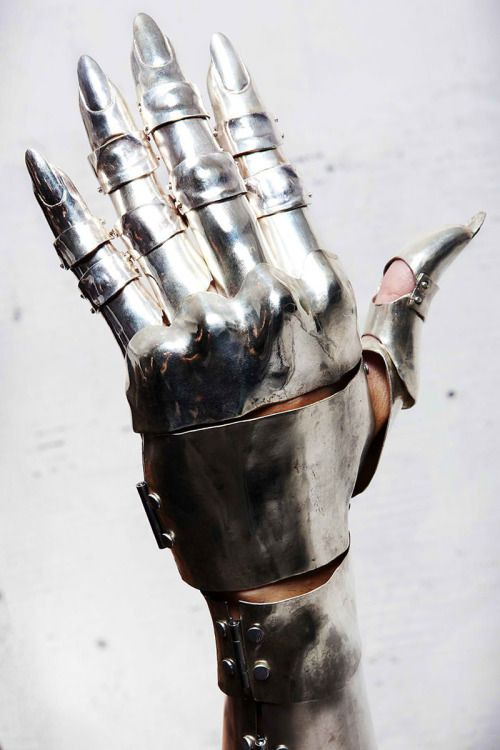
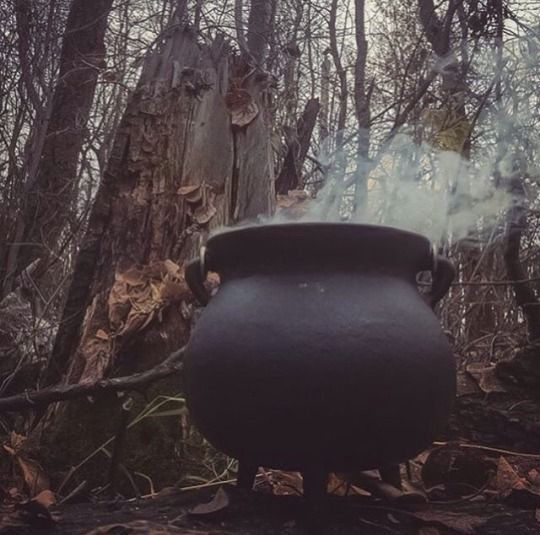
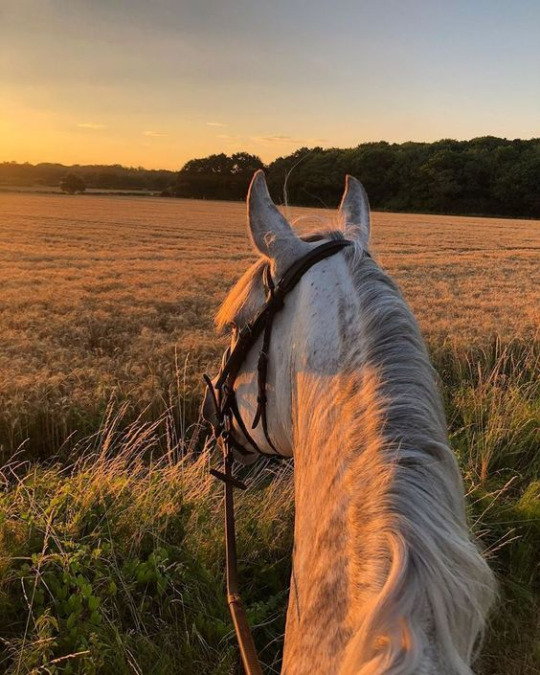




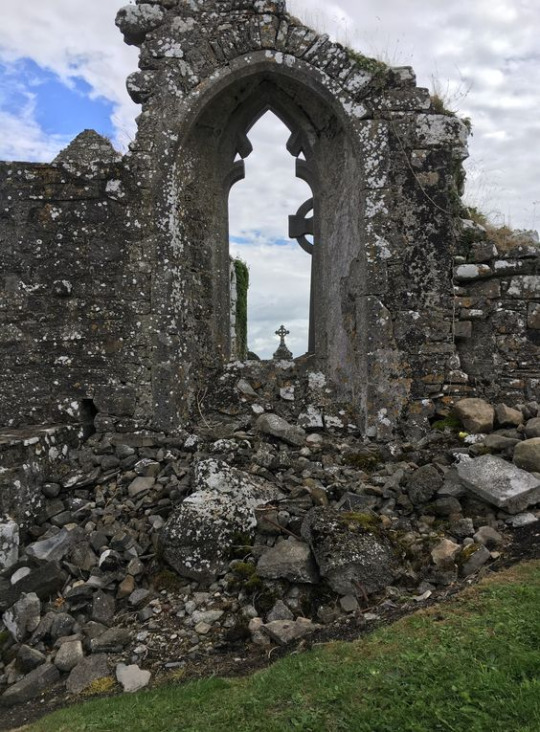
2 notes
·
View notes
Text
I just got Morgan Daimler's books on The Dagda and The Morrigan. I've read some of her fairy books and liked them. Though they seem less myth related abd kore folk stories. I've always been interested in Irish mythology, but when I start I immediately start associating the names with those horrible new agey Celtiboo books (celtic shamanism...) and get turned off. Which isn't fair to actual Irish (and similarly with Welsh) myths and stories. The misappropriation is not their fault.
I'm hoping these books completely snap me out of that thinking and make it easier to read the myths. I remember how difficult reading norse myths was until I started reading essays about specific concepts and gods. Crossing my fingers it works the same here.
Does anyone have thoughts about these books?
3 notes
·
View notes
Text
Here are my versions of Typhon/Abzu, Echidna/Tiamat, Ymir, and the Dagda!
WARNING: There are brief mentions of genitalia.

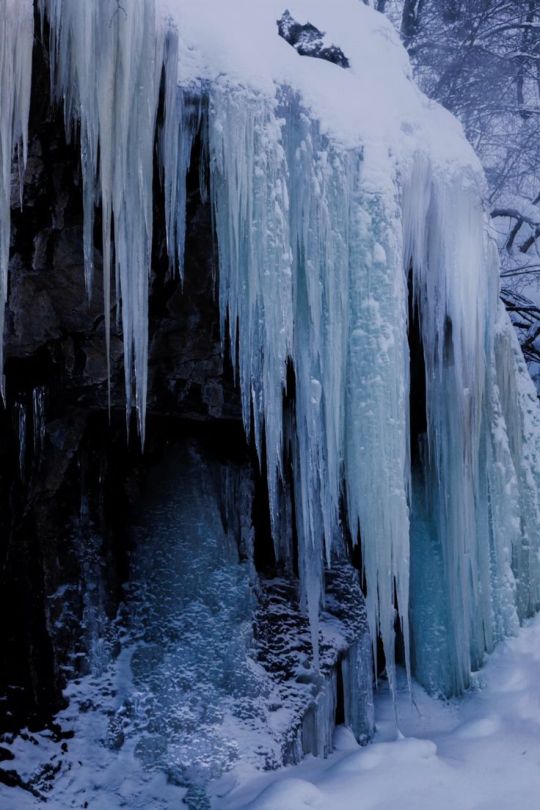

Telaphorszun/Abhejozur is fully capable of threatening serious harm and causing immense dread amongst those he comes across or witnesses him in person. He can be extremely annoying and shameful, which strangely makes him quite bold and startling. Despite his promiscuous nature, he’s very faithful, protective, and somewhat reliant on his mate, Ækhodzinus/Tiamosjur. He occasionally shows his undue and excessive pride in his appearance, prowess, and personal achievements. He has a ravenous appetite, showing no fear in acting upon his violent greediness for food. Telaphorszun/Abhejozur lacks proper consideration for others that aren’t his friends and family, and he possesses a drive to acquire authoritative power. When he’s blinded by pure rage, he falls into unrestrained surrender to impulse without regard, behaving in an uncontrollable way. He’s strict, yet patient and caring towards his children, and he has fairly excellent intelligence and wisdom. His wisdom gives him a better advantage of dealing things with partial cautiousness and passionate diligence.
He’s immensely gargantuan that his head brushes against the stars, possessing the upper torso of a grotesquely muscular man made from freshwater. He has two coiled European ratsnakes in place of legs and his waist is covered in ten bull heads, ten boar heads, ten serpent heads, ten lion heads, and ten leopard heads. He possesses pointed ears, carnivorous teeth, two serpentine tongues, and eyes that flash orange fire with each heartbeat. He has four monza red eyes of wattle sclera, chateau green pupils, and vertical turquoise slits in the middle. Telaphorszun’s/Abhejozur’s four dew-covered massive wings have a gradient of elm, rock spray, and tussock. His filthy old brick hair is tied into five braids and his beard is shaped into deliberate, beautifully-organised curls in tightly-coiled pillars. He wears a rounded eastern blue cap with seven superimposed pairs of platinum ox-horns, gilt-brass armlets, and a golden shawl with fiery silver patterning on the edges and tassels.
His dark aura can generate devastating storms, and he can breath fire, vomit molten lava, and create volcanic rocks that are used to hurl at his enemies. His presence is able to strike fear in the hearts of those who witness him, causing them to flee instantly. The magnitude of his strength can easily cause Earth to tremble and he’s incredibly durable, only being harmed by lightning bolts and tridents. Telaphorszun/Abhejozur is also phenomenally agile and it allows him to dodge most projectiles, and he possesses nearly absolute reflexes, senses, speed, and stamina. He can manipulate avalanches, earthquakes, volcanic eruptions, hydrological disasters, meteorological disasters, wildfires, violent thunderstorms, hurricanes, volcanic eruptions, and floods. He can spew large amounts of venom that can instantly poison two seas, quickly regenerate wounds, and shapeshift into madness-inducing forms. He’s able to use his wings to fly and his vocal chords to produce the sounds of any wild and domesticated animal. Telaphorszun/Abhejozur has the ability to create lakes, springs, rivers, wells, and other sources of freshwater by manipulating the primordial void.
FAMILY:
Unnamed chthonic and storm god or “Tartarus” (father)
Unnamed earth goddess or “Gaia” (mother)
Ækhodzinus/Tiamosjur (wife)
Uysemogila (child)
Basmuzogen (daughter)
Kusevhorija (son)
Lahtezomu (son)
Uyrszegalo (daughter)
Uyrdozhema (daughter)
Girtablemu (son)
Oymdabretus (son)
Unnamed nine-headed swamp dragon or “Hydra”
Unnamed dragon that guards golden sheep or “Colchian Dragon”
Unnamed hundred-headed dragon that guards golden apples or “Ladon”
Unnamed fire-breathing she-monster or “Chimera”
Unnamed malevolent riddle-asker or “Sphinx”
Unnamed three-headed giant that owns flesh-eating cattle or “Geryon”
Unnamed monstrous female pig or “Crommyonian Sow”
Unnamed giant lion with skin that’s impervious to any weapon or “Nemean Lion”
Unnamed liver-devouring eagle or “Caucasian Eagle”
Kerabhonius (adoptive daughter)
Oyrthalenius (adoptive son)
ALIASES/NICKNAMES:
Typhon
Abzu
The Cries of All Wild Beasts
Hurler of Kindled Rocks
Serpent of the Deep
FUN FACTS/EXTRA INFORMATION:
His closest friend is Ymejahor (or Asgelomur)
He deeply hates Odersvani for killing Ymejahor and Ziesowa for being brutally forced out of his mountainous territory where Mount Olympus is.
He absolutely hates humanity and most members of The Phaethon.
As an Æylphitus, his name means “cyclone, hurricane or smoking one”. In regards to his second name, Abhejozur means “deep water”.
Ækhodzinus/Tiamosjur is cunning with fierce manipulative tactics and a strong sense of prideful independence. She’s capable of showing fury and malignity in her actions, treating those who disrespect or annoy her and her brethren with savage cruelty. She prefers to viciously harm vile men and masculine entities as she views them as being inferior to their female counterparts. However, she possesses more tranquil, compassionate, and generous tendencies compared to her mate, Telaphorszun/Abhejozur. She has a fairly intense bloodlust and a desire for revenge against those who wronged virgin and pregnant women. She possesses a twisted enjoyment in seducing foolish and impressionable mortals, indulging in her unyielding libido. She experiences palpable mood swings from joyous and energetic to miserable and agitated, which somewhat makes her unpredictable and disorderly wild. Ækhodzinus/Tiamosjur occasionally behaves in a noisy and rude manner during public meetings and parties, but it depends on her current mood and appetite.
Her beautiful mesomorphic body with a lack of breasts, four arms, and a rounded belly is covered in a thin layer of fetid feijoa slime. She has swamp green skin and a gumbo cow udder with greyish speckles and faint purple veins. She has glancing hibiscus eyes with emerald pupils and tacha sclera, a forked tongue, four pointed ears, black claws, and fair rosy cheeks. The upper row of yellowed omnivorous teeth has long fleshy fangs where her canines should be, which indicates that she has a venom sac. Ækhodzinus/Tiamosjur possesses a thick, long mass of curly como hair with maroon flush sheen, and her human torso is protruding from a sea dragon. The sea dragon has the blue-green-white colouration of a Lake Kutubu rainbowfish and four shimmering avian luxor gold wings. Their forelegs and hind legs end in the talons of an eagle and their elongated, feathered necks match the hue of the wings. It also possesses ten snarling lioness heads with flesh-devouring, bone-crushing teeth, glowing purplish-red eyes, and upwards-pointed canine ears.
She has manipulative control over sea-scum, salt-marshes, and the corruptions of the earth in the form of rot, slime, polluted waters, illness, and disease. Ækhodzinus/Tiamosjur is able to quickly conceive and give birth to a spawn of terrible monsters in less than nine months. She can produce a venom that has the power to induce madness, change her size, and use freshwater to create Oceanids and Naiads. She’s practically immortal and ageless, but giants and heifer blood could cause her a sufficient amount of bodily harm. She possesses total authority over all monstrous dragons and snakes, and the ability to quickly regenerate any inflicted wounds. By utilising her massive bird wings, she’s able to fly and deflect magical melee and ranged attacks. She can inflict mortals with any curse imaginable and create rifts in reality to travel across the multiverse. Her aura can distort and warp the weather, crush mountains, and boil seas, and her physical strength, agility, speed, reflexes, senses, and stamina are as good as her mate’s. Ækhodzinus/Tiamosjur is capable of unleashing chaos during times of upheaval and generating air, electricity, and water.
FAMILY:
Unnamed dangerous sea god or “Phorcys” (father)
Unnamed sea monster goddess or “Keto” (mother)
Telaphorszun/Abhejozur (husband)
Uysemogila (child)
Basmuzogen (daughter)
Kusevhorija (son)
Lahtezomu (son)
Uyrszegalo (daughter)
Uyrdozhema (daughter)
Girtablemu (son)
Oymdabretus (son)
Unnamed nine-headed swamp dragon or “Hydra”
Unnamed dragon that guards golden sheep or “Colchian Dragon”
Unnamed hundred-headed dragon that guards golden apples or “Ladon”
Unnamed fire-breathing she-monster or “Chimera”
Unnamed malevolent riddle-asker or “Sphinx”
Unnamed three-headed giant that owns flesh-eating cattle or “Geryon”
Unnamed monstrous female pig or “Crommyonian Sow”
Unnamed giant lion with skin that’s impervious to any weapon or “Nemean Lion”
Unnamed liver-devouring eagle or “Caucasian Eagle”
Kerabhonius (adoptive daughter)
Oyrthalenius (adoptive son)
ALIASES/NICKNAMES:
Echidna
Tiamat
The Serpent Womb
The Glistening One
Eel of the Stormy Pit
FUN FACTS/EXTRA INFORMATION:
Her husband often runs to her when he has been emotionally insulted or physically hurt.
Unlike her husband, she frankly doesn’t care much about her own children, but she does have a soft spot for Kerabhonius and Oyrthalenius.
As an Æylphitus, her name means “poisonous viper”. In regards to her second name, Tiamosjur means “sea”.
Ymejahor, born as Asgelomur, is motivated by purely animalistic instincts and is ruthlessly determined to get what they desire, uncaring to the plight of others. Due to being primarily moved by instinct, they often come off as disorderly wild and uncontrollable. They’re extremely cruel and violent towards a small portion of Æylphitus and all non-Æylphitus, finding sexual gratification in witnessing their torture, misery, and humiliation. They only act friendly, compassionate, and respectful towards their friends and family as they value their companionship.
They’re a hermaphroditic entity with a height slightly greater than Earth and a disturbingly mesomorphic body type that has a chiselled musculature and well-endowed breasts. They also have a partially rounded belly, a grotesque and spiky penis, and prominent thighs. Their porcelain skin has a hint of Columbia blue and jungle green with protruding red-violet veins on their neck, biceps, triceps, belly, and upper legs. They have icy blue ram horns and long straight, yet messy ghost white hair with streaks of platinum. They possess bloodshot heterochromia eyes, the right is a yellow-orange and the left is lavender with a sky blue pupil. Their crooked omnivorous teeth can crush bone and tree trunks, and their back is covered in snow-topped moss. They have razor-sharp claws and talons of unbreakable ice, a Fjäll cow tail, an aurochs skull necklace, and a loincloth of reindeer fur.
They have incalculable physical and mental condition and the ability to generate ice, snow, poisonous gases, hot embers, and dark voids. They can manipulate air, earth, fire, and water, change their size, and shapeshift into aurochsen, reindeers, giants, humans, and Ufrajozlens. They have a chilling cold aura that can easily create hail storms and blizzards, and freeze living creatures who get close to them. They’re entirely insusceptible to cold and warmer climates, and capable of creating giants from their armpits and lower legs. Due to their insatiable hunger, they can easily consume every known indigestible and digestible substance.
FAMILY:
Unnamed primeval cow or “Auðumbla” (mother)
“Þrúðgelmir” (son)
“Bergelmir” (grandson)
Ysbedulona (descendent)
Oylwaphen (descendent)
Vafjethudnir (descendent)
Jurnesoxa (descendent)
Skojamur (descendent)
Mugnazori (descendent)
Orgezlusa (descendent)
Skudezorvija (descendent)
Ängrebodius (descendent)
Farneboluti (descendent)
Lokjafeni (descendent)
Narfezomuti (descendent)
Valeszowuji (descendent)
Slepzhamonir (descendent)
Huljatemo (descendent)
Fenjuzori (descendent)
Hameluti L’Hrodvatenius (descendent)
Skojazlen (descendent)
Jormeghandius (descendent)
Forszaleti (descendent)
Modjazeri (descendent)
Orsvezhan (descendent)
Unnamed female giant descendent
Galehoziut Farkletombius (descendent)
Galechornius (descendent)
Bolaphurine (descendent)
Hrosapjelf (descendent)
D’Grufhelona (descendent)
Billions of other descendents
ALIASES/NICKNAMES:
Ymir
Aurgelmir
Brimir
Bláinn
Silent Progenitor
Sound of Clay
The Frost Giant
The Gravelly Scream
FUN FACTS/EXTRA INFORMATION:
They’re described as the first living creature who was the ancestor of all giants, being born from a yeasty venom that dripped from an icy river.
Their flesh formed the earth of Pangaea, their blood purified into bodies of water, their bones became the mountains, their hair created the trees, their helped to shape the clouds, their skull was used as sturdy protection for the sky, and their eyebrows were transformed into leylines as well as mortal and spiritual boundaries. Their jaw and teeth were broken down into rocks and pebbles, their right eye became the Sun, and their left eye was changed into Earth’s moon.
It’s commonly believed by many that their flesh and blood aided in the creation of the dwarves.
As an Æylphitus, their name means “to whine, hermaphrodite or twin”. In regards to their second name, Asgelomur means “shouting clay, sand-bellower or gravel-roarer”.
Dagtezobius is slovenly lecherous and oafish, being a result of his fun-loving, mischievous, and combat-oriented attitude. As a result of his strong fatherly instincts, he’s often gentle, friendly, and compassionate to those he views as family and friends. He only flies into a fit of rage when they have been hurt or wrongly abused, annihilating the perpetrator that’s responsible for their anguish. Whenever he feels threatened or frustrated, he comes off as strangely serious and fearsome. He’s fairly versatile, allowing him to utilise a variety of personal skills and adjust to new conditions. He places genuine value on humility, honesty, faithfulness, independence, and wisdom, which he strictly applies to his life choices and relationships. Dagtezobius seems to be full of clever humour and skilled at gaining an advantage through deceit, having a very good understanding of situations and possibilities. He’s eager to help in a beneficial and advantageous way, and noticeably adventurous, willing to take risks and try new methods.
He’s as tall as the largest mountain, possessing a trapezoidal endomorphic body with robust limbs, chiselled pecs, broad shoulders, a prominent belly, a well-endowed penis, four arms, and Irish elk antlers. His shoulder-length, curly hair and long, unruly beard are a shimmering maroon oak with streaks of old brick. He even has thick, bushy eyebrows and curly pecto-sterno-infraclavicular and sagittal hair of the same hue. He has heterochromia eyes, the right is sky blue and the left is jade, and a fair complexion with reddish-brown freckles on his face, neck, and hands. He wears a woollen saffron-yellow cloak, an ill-fitting linen copper rust tunic, and Connemara pony fur boots. He dons a knee-length pleated goblin green kilt with black, white, hippie blue, and gold stripes. In order to hold Dagtezobius’ kilt in place, he has a cow leather belt with a golden buckle, a red fox tail, and a lucky rabbit’s foot. He carries a shepherd's crook named Lorg Mór, a mace of dual nature named Lorg Anfaid, and a richly ornamented harp of oak named Uaithne. Uaithne could place the seasons in proper order and even command the wills and emotions of sentient beings. The head of Lorg Anfaid can slay nine men in a single swing, while its handle could revive the slain through physical touch. He also has a bottomless cauldron that’s tied to his back named Coire Ansic, which produces a bountiful feast, never runs empty, and acts as a portal to other dimensions.
He manipulates size, fertility, agriculture, manliness, druidry, wisdom, war treaties, traditional music, life, death, the weather, crops, time, and the four seasons. As a result of his absolute charisma, he has the ability to command the respect and admiration from both Æylphitus and mortals alike. He possesses omnicompetence, absolute strength, and total knowledge of the earth and fire. Dagtezobius has a perfected mastery over agriculture, meteorology, alchemy, astrology, conjuration, divination, herbalism, necromancy, music, and the art of war. He can prevent the sun from setting by holding it in place for nine months and summon a drift of pigs and a herd of cows.
FAMILY:
Unnamed goddess of motherhood and agricultural prosperity or “Danu” (mother)
Kaleszochi Moraghuine (ex-wife)
Ayngezobius (son)
Brigedonus (daughter)
ALIASES/NICKNAMES:
The Dagda
Fatherly Horseman
Striking Creator
Horned Man
The Fiery One
The Fertile One
Man of the Peak
Mighty Lord of Great Knowledge
FUN FACTS/EXTRA INFORMATION:
His domain is an infinite series of Neolithic mounds, having an orchard that bore perennial sweet fruit and being aligned with the rising sun during winter solstice.
He has two pigs, one of which was always growing whilst the other was always roasting.
He also has a black-maned heifer that causes all cattle to graze by calling for its calf.
As an Æylphitus, his name means “good god”.
His sacred animal is a pig
A cauldron, mace, and harp are his sacred symbols.
#writerscorner#writing#creative writing#original character#personality#physical appearance#outfit#abilities#power#deity#gods and goddesses#god#goddess#greek mythology#greek gods#titan#typhon#echidna#mesopotamian mythology#abzû#tiamat#norse mythology#jotun#giant#ymir#celtic mythology#irish mythology#the dagda#fun facts#extra information
3 notes
·
View notes
Text


#witchcraft#witchblr#witch community#witchcore#witch business#pagan#pagan blog#paganism#celtic pantheon#celtic paganism#dagda#an Dagda#the dagda
6 notes
·
View notes
Text
One of the wild instances of the Dagda
Some men of the enemy tribe offered the Dagda porridge. Due to hospitality rules, the Dagda could not refuse it. The men made a giant vat of porridge in a hole in the ground --enough to kill one man who attempted to eat it all. Well, the Dagda ate every last bit and even licked up the dirt.
This gave him a giant stomach, and the enemy dudes laughed at him. The Dagda then proceeds to go about his business with no pants on with his long d*ck hanging out, wearing a little green cape and hood that only went to his elbows. He meets a woman who wants him to carry her like he was her horse or something. The stones in his belt (idk???) fall and are said to be some stones out in Ireland somewhere. She beats him, makes him crap out the porridge into a ditch, and then she tells him how she will thwart him in battle. He defies her threats. They have sex.
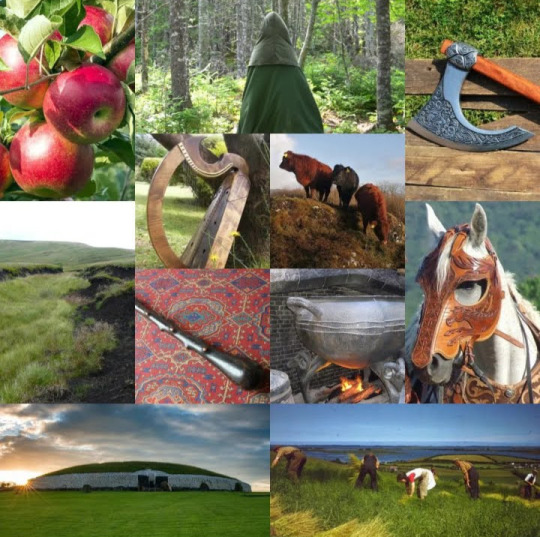
#irish mythology#tuatha de danann#pagan#irish myth#irish lore#mythology#paganism#celtic myth#the Dagda#irish gods#lore
16 notes
·
View notes
Text
I’ve been thinking a lot about An Daghdha and envisioning Him as the type of father figure I wish I had growing up. Someone understanding, supportive, and willing to listen. I never realized how much I needed a figure like that in my life until I had one.
6 notes
·
View notes
Text
Today, I got a pair of cow earrings from a local crafter (because they reminded me of the Dagda) and, as I walked home, saw my first tiger swallowtail of the year-- actually, my first large-flying-insect-thing of the year, excluding those little cabbage moths-- so I assume he liked them, too! Devotional jewelry it is :D
#the dagda#dagda#celtpol#pagan#polytheism#you know you're a celtpol when you must have everything cattle themed all the time#i am very lucky to live in a farming community lol
3 notes
·
View notes
Text


iv final doodles
14 notes
·
View notes